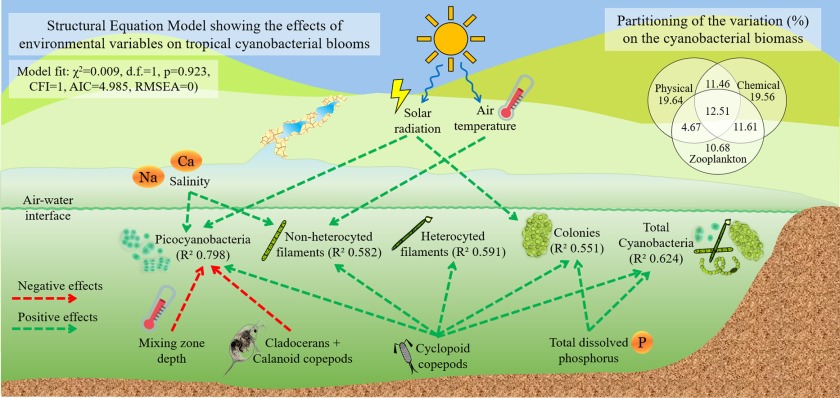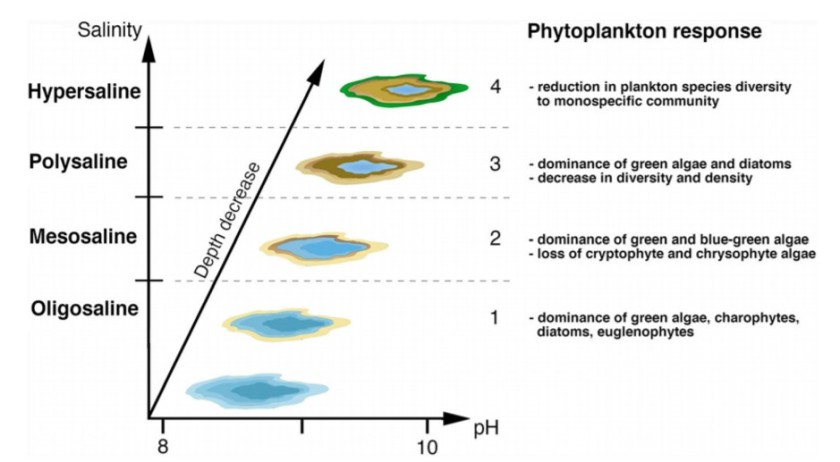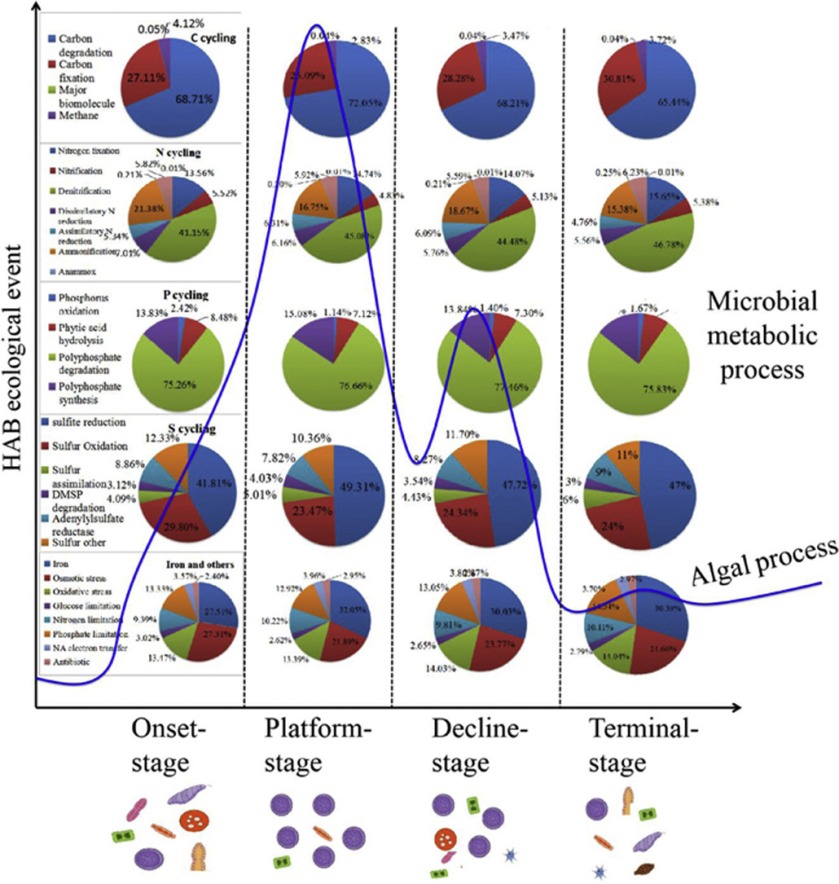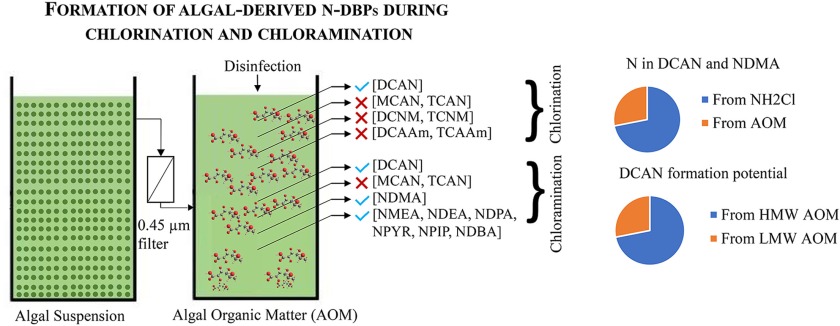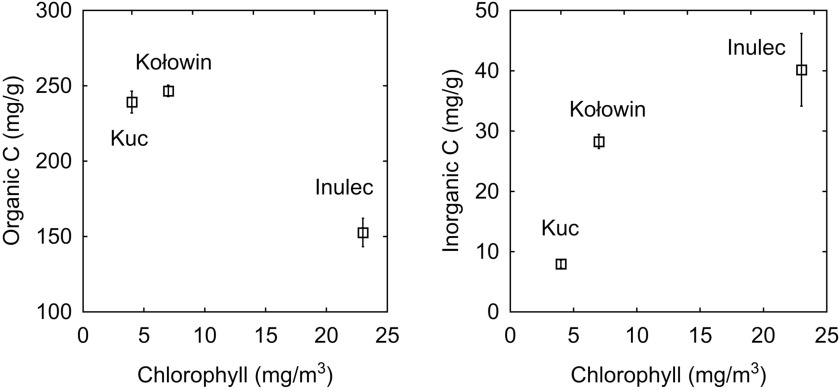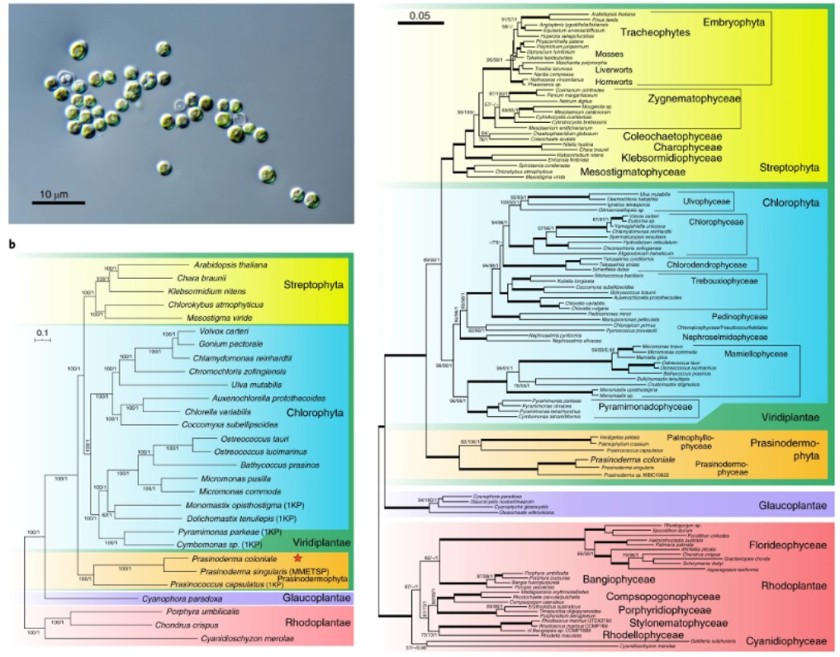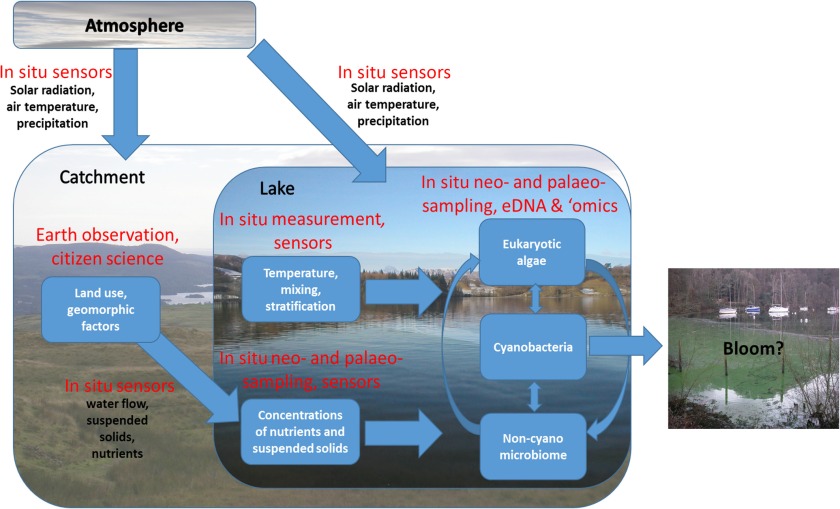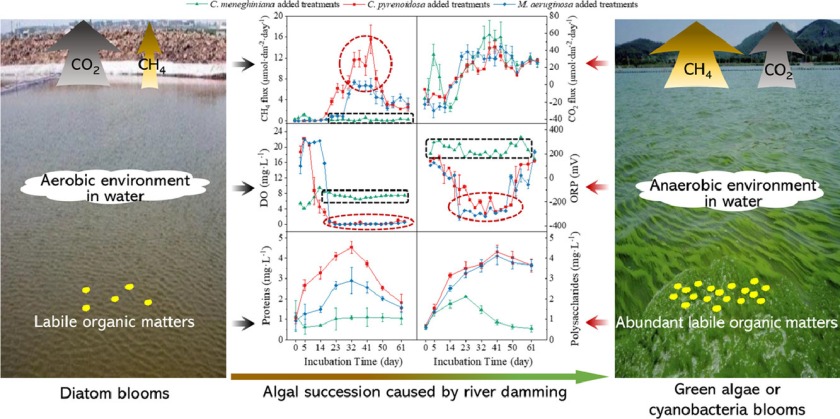
Authors
Haolian Xu, Hong Li, Zhenzhen Tang, Yi Liu Guo Li, Qiang He
The impoundment of dammed rivers accelerates phytoplankton succession from river-dominated to lake-dominated species. Little is known about the role of phytoplankton succession in methane (CH4) production. In this study, we performed a 61-day microcosm investigation to simulate the collapse processes of Cyclotella meneghiniana (river-dominated algae) and Chlorella pyrenoidosa and Microcystis aeruginosa (lake-dominated algae). The results suggested that different methanogenic conditions were induced by the collapse of river-and lake-dominated algae. The rapid settlement of C. meneghiniana induced aerobic conditions in the water that inhibited anaerobic CH4 production and intensified CH4 oxidation as a result of an increase in pmoA. However, the decomposition of C. pyrenoidosa and M. aeruginosa depleted dissolved oxygen and provided abundant labile organic matter, which jointly elevated mcrA and the mcrA/pmoA ratio. Under this condition, anaerobic CH4 production was the dominant pathway for the mineralization of algae-derived carbon. Finally, the CH4 produced per unit of particulate total carbon (identified as the carbon content of the algal biomass) by C. pyrenoidosa and M. aeruginosa was 16.29-fold and 8.56-fold higher, respectively, than that produced by C. meneghiniana. These observations provided evidence that lake-dominated algae played a more vital role in CH4 production than river-dominated algae when algal succession occurred. This discovery might be a new and vital, yet largely underestimated CH4 emission pathway in river-reservoir systems, that should be considered when evaluating the effect of hydraulic projects on greenhouse gas emissions.

